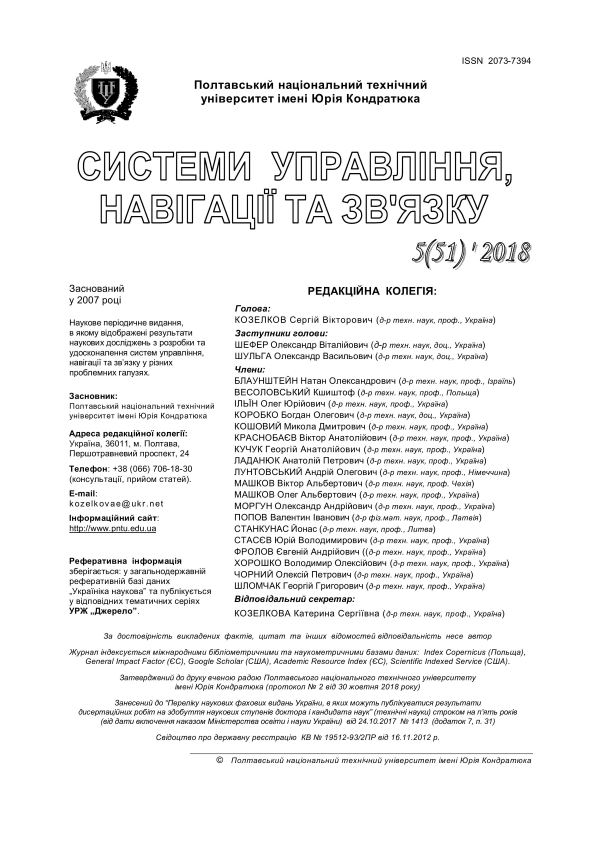QUALITY ASSESSMENT METHODS OF WORK OF RECOMMENDATION SYSTEMS
DOI:
https://doi.org/10.26906/SUNZ.2018.5.092Keywords:
recommendation on systems, quality metrics, accuracy of work, quality of work, coverage, filter bubble, information security, data analysis, software testingAbstract
The subject matter of the article is the processes of assessing a quality of the work of a recommendation systems. The goal is to investigate the problems of modern recommendation systems and to find methods for their solution. The tasks to be solved are: to identify the most important a quality metrics of the work of a recommendation systems and research the methods for their assessment. The following results were obtained: the main and additional quality metrics of a recommendation systems work are considered. Their importance from the point of view of assessing the different properties of a list of recommendations have been studied. Further directions of research for the development of a quality assessing methods of the work of recommendation systems have been determined. Conclusions. The main quality metrics of the work of recommendation systems is the prediction accuracy of user's ratings, as well as covering the space of objects and covering the space of users. Additional quality metrics of recommendation systems are diversity, novelty, serendipity, robustness, privacy, risk. The metrics of diversity, novelty and serendipity allow us to assess the quality of a structure of recommendations and the probability of the filter bubble problem. Metrics of robustness, privacy and risk can assess the information security of the recommendation system and its users. For each individual web-resource or application, you can create your own set of additional quality metrics of the recommendation system, but the considered additional quality metrics will be relevant for almost any case. The following metrics can also be important: confidence, trust, adaptability, scalability, throughput, utility, etc. Since there are no generally accepted measure and methods for assessing such quality metrics of recommended systems, such as diversity, novelty, serendipity, privacy, risk, robustness, the scientific-practical task of developing such methods is actualDownloads
References
Jones M. Recommender systems, Part 1. Introduction to approaches and algorithms. Learn about the concepts that underlie web recommendation engines / M. Jones – 2013. [Електронний ресурс] – Режим доступу: https://www.ibm.com/developerworks/opensource/library/os-recommender1/index.html?s_tact=105agx99&s_cmp=cp
Мелешко Є.В. Дослідження методів побудови рекомендаційних систем в мережі Інтернет / Є.В. Мелешко, Г.С. Семенов, В.Д. Хох. // Збірник наукових праць "Системи управління, навігації та зв’язку". Випуск 1(47). – Полтава: ПНТУ ім. Ю. Кондратюка. – 2018. – С. 131–136.
Сегаран Т. Программируем коллективный разум. – Пер. с англ. – СПб: Символ-Плюс, 2013. – 368 с.
Амелькин С.А. Оценка эффективности рекомендательных систем // Труды 14-й Всерос.НК «Электронные библиотеки: перспективные методы и технологии, электронные коллекции» - RCDL-2012, Переславль-Залесский, 2012. – С. 288-291.
Recommender Systems Handbook / Editors Francesco Ricci, Lior Rokach, Bracha Shapira, Paul B. Kantor. – 1st edition. – New York, NY, USA: Springer-Verlag New York, Inc., 2010. – 842 с.
Yao Y.Y. Measuring retrieval effectiveness based on user preference of documents / Yao Y.Y. // Journal of the American Society for Information Science. – 1995. – №46. – С. 133–145.
Breese, S., Heckerman, D., Kadie, C. Empirical Analysis of Predictive Algorithms for Collaborative Filtering. / In Proc. of the 14th Conference on Uncertainty in Artificial Intelligence, volume 461. – San Francisco, CA, 1998. – pages 43–52.
Castells, P., Vargas, S., Wang, J. Novelty and Diversity Metrics for Recommender Systems: Choice, Discovery and Relevance / P. Castells, S. Vargas, J. Wang. – 2011. [Електронний ресурс] – Режим доступу:
Kaminskas M., Bridge D. Measuring Surprise in Recommender Systems. [Електронний ресурс] – Режим доступу: https://www.insight-centre.org/sites/default/files/publications/recsys2014.pdf.




